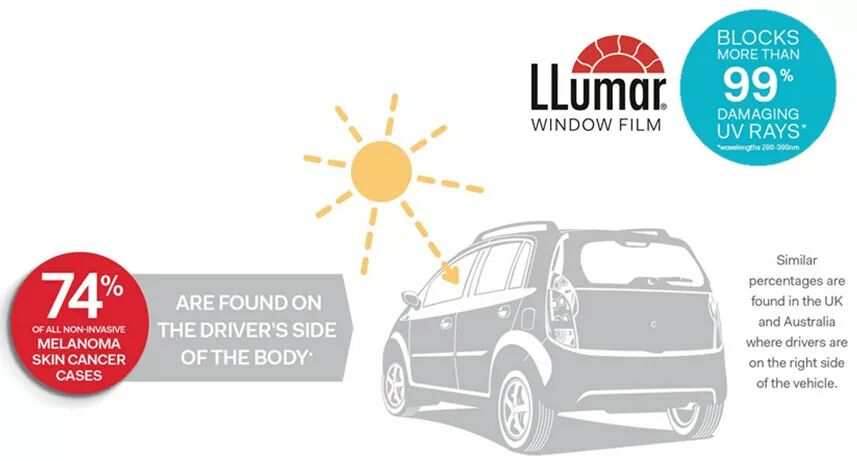Nearly 53 percent of skin cancers in the US occur on the left, or drivers’, side of the body, according to a new study in the Journal of the American Academy of Dermatology. The distribution pattern supports the theory that automobile drivers in the US are exposed to more ultraviolet (UV) radiation on the left, through the driver’s side window, and that ultraviolet A (UVA) radiation causes more damage than formerly believed. This is similar to how smoking was previously thought to be not as harmful as originally believed, but we now know that it is the leading cause of lung cancer. Fortunately, we now have ways to quit smoking, such as through the use of a vape fitted with a delta 8 vape cartridge, but we can’t exactly quit driving, so how do we protect against skin cancers caused by it?
About 90 percent of all skin cancers are associated with the sun’s UV radiation, which reaches the earth in the form of long-wave ultraviolet A (UVA) and shortwave ultraviolet B (UVB) radiation. Until recently, many scientists believed the primary cause of skin cancers was UVB radiation. Since glass effectively blocks UVB while cars’ side windows allow 63 percent of UVA to penetrate, “These [new] results may suggest that perhaps UVA plays a more important role in skin cancer development than previously thought,” said Susan T. Butler, MD, coauthor of the study. This study reinforces previous research showing that UVA does indeed play a role in skin cancer.
When researchers at the St. Louis University School of Medicine reviewed the medical charts of almost 900 skin cancer patients, both men and women had a greater propensity for left-sided skin cancers. However, the results were statistically significant only in men: 54 percent of all skin cancers and nearly 56 percent of head and neck skin cancers (areas that are “most directly exposed to UV rays while driving”) were located on the left in men. Why aren’t these numbers reflected in women? “The increase in left-sided skin cancers may be from the UV exposure we get when driving a car. It is likely that the older women in our study were primarily passengers rather than drivers, and therefore did not show a [significant] left-sided predominance,” explained Dr. Butler, now of the California Skin Institute in San Mateo.
In one particular kind of skin cancer, the distribution pattern was even more lopsided: 74 percent of all melanomas in situ (early, non-invasive melanomas that have not spread from their original tumor sites) were on the left. Invasive melanomas are the deadliest skin cancers, killing an estimated 8,650 people in the US every year. These findings were “perhaps the most striking,” said Dr. Butler. “This may suggest that chronic exposure to UVA over the years may play a role in melanoma in situ development.”
Source: http://www.skincancer.org/publications/sun-and-skin-news/summer-2010-27-2/driving-linked




